In the sandy soil of coastal villages in Bougainville, standard pit latrines proved to be unworkable – the sides of the pit would just cave in. With Oxfam’s support, local water technician John Narivau and the residents of Sirovai village perfected an ingenious solution. As a result, they are in the process of building a toilet for each family and significantly reducing the risk of waterborne diseases, such as diarrhoea.
In the sandy soil of coastal villages in Bougainville, standard pit latrines proved to be unworkable – the sides of the pit would just cave in. With Oxfam’s support, local water technician John Narivau and the residents of Sirovai village perfected an ingenious solution. As a result, they are in the process of building a toilet for each family and significantly reducing the risk of waterborne diseases, such as diarrhoea.
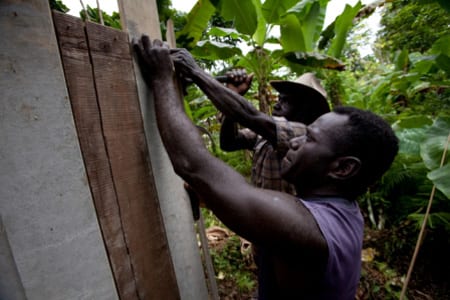 |
| The first step is to nail together a circular wooden frame. |
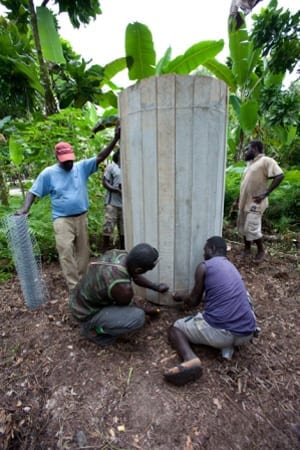 |
| Binding the frame with wire secures it. |
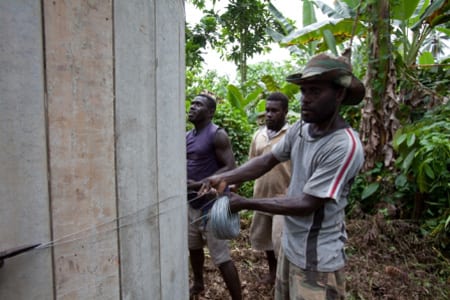 |
| It makes the latrine’s structure more rigid in the sandy conditions. |
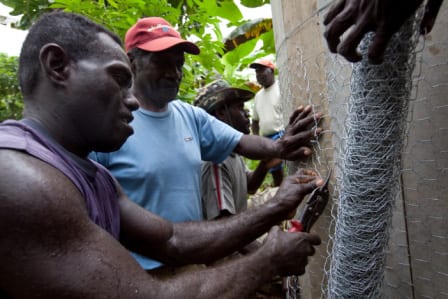 |
| Chicken wire is fixed all the way round the latrine to add strength and give cement something to stick to. |
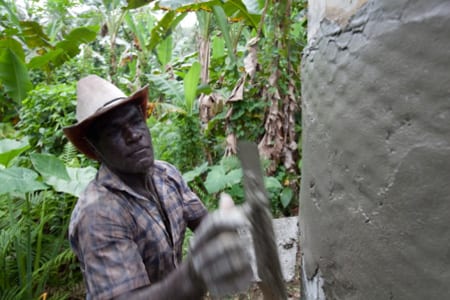 |
| The frame is now plastered with three layers of cement. After drying, the wooden frame can be removed and used again to make more concrete pit liners. |
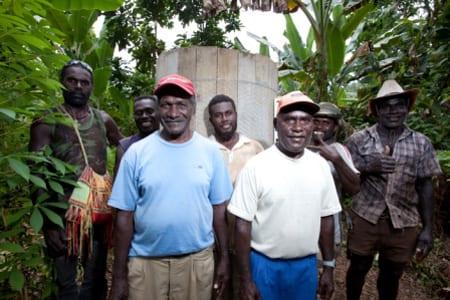 |
| Technician John Narivau with village chief Daniel Kalang and men from Sirovai village. Everyone is keen to be involved in the construction: it’s their village, and their future health that is being safeguarded. |
 |
| To get the concrete pit liner into the ground, someone simply climbs inside and digs the soil out. The concrete cylinder slowly moves down. |
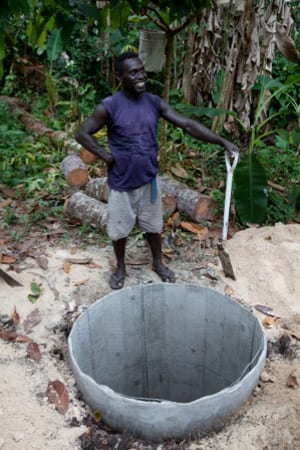 |
| After a few hours of digging, the concrete cylinder is stable in the sandy soil. All that remains is to put a concrete pad on it and build a bush material hut over the whole thing. Here, Jim Siseta’s latrine will be vital in securing his family against disease. |
Water for survival: Bougainville
Watch the video to see how Oxfam is helping bring sanitation, water and hygiene to Papua New Guinea.



